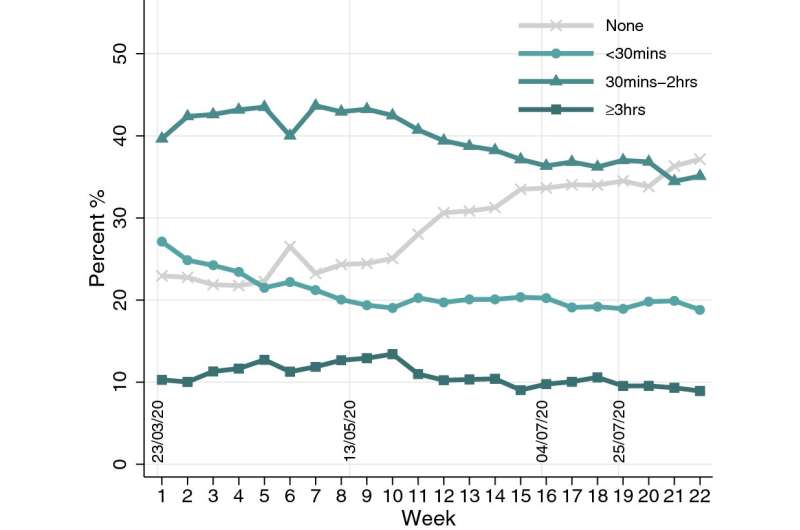
Nearly 29% of participants reduced their levels of physical activity during and after the first lockdown in England (March to August 2020), according to a study involving 35,915 adults, published in Scientific Reports. The findings also show that amongst the people whose physical activity levels did not change, 19% (12% of total participants) were consistently inactive. More public health efforts may be needed to promote physical activity for the general population during the COVID-19 pandemic and beyond.
Feifei Bu and colleagues analyzed data on 35,915 adults in England, collected as part of the UCL COVID-19 Social Study, from 24 March to 23 August 2020, a period encompassing a strict lockdown followed by the easing of restrictions.
During this period, the authors observed a steady increase in the percentage of people who reported not having done any physical activity on the previous working day. They found that 28.6% of participants showed either declines in physical activity or increased physical inactivity, while 9% of participants showed increased physical activity. Other participants showed little change in their levels of physical activity over time: those with a high probability of physical inactivity (“inactive,” 11.6%); those with a moderate probability of doing physical activity for short (under 30 minutes) and medium (30 minutes to 2 hours) durations (“fairly active,” 22.2%); and those with a high probability of exercising for 30 minutes to 2 hours (“highly active,” 28.6%).
The authors also identified factors associated with different patterns of physical activity over time. People who were older, more educated, had a higher household income, shared a household with others, and those without long-term physical and mental health problems, were less likely to be persistently inactive.
Source: Read Full Article